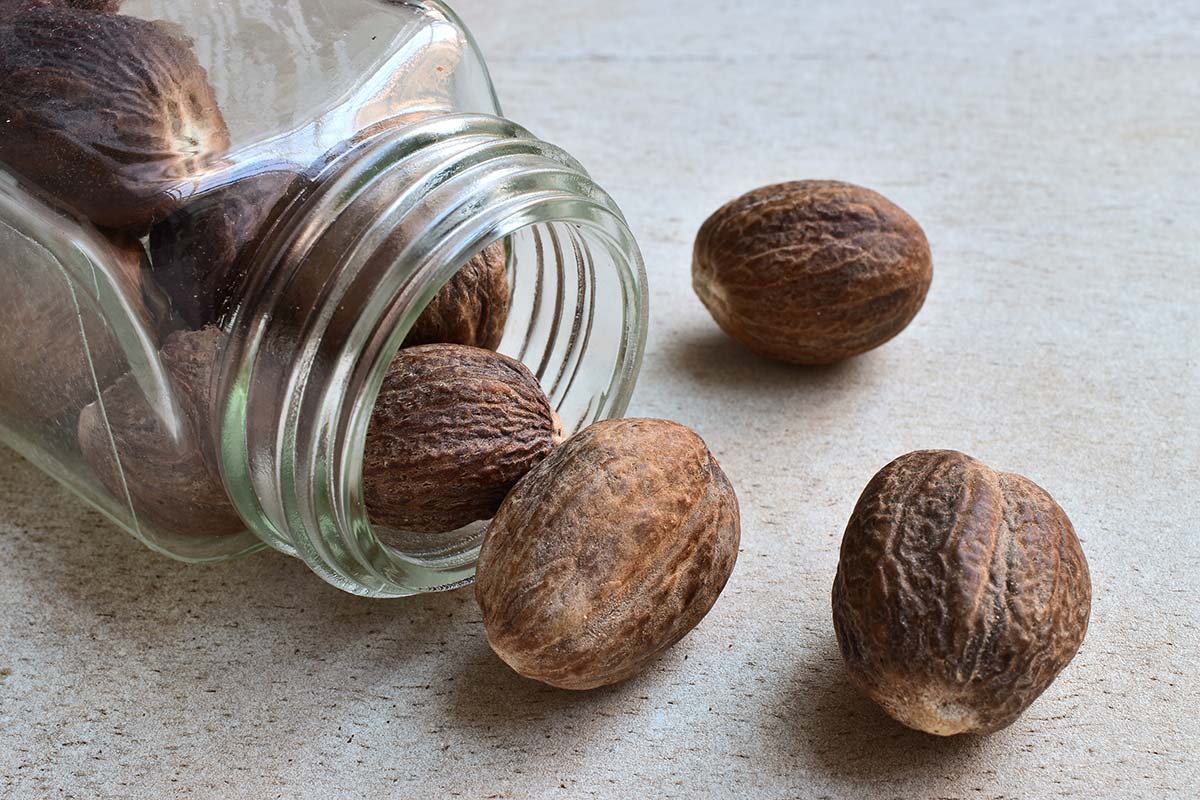For centuries, мушкатни орашчић has been a prized spice, sought after for its warm, aromatic flavor and its ability to transform both sweet and savory dishes. From classic holiday eggnog to creamy béchamel sauce, its distinctive taste is instantly recognizable. But beyond its culinary uses, nutmeg has a fascinating history filled with exploration, conflict, and even mystery.
This guide will explore the world of nutmeg, from its origins on a tiny cluster of islands to its modern-day applications in kitchens around the globe. We will cover its unique flavor profile, its health benefits, and creative ways to incorporate this versatile spice into your cooking. Whether you are a seasoned chef or a home cook looking to expand your spice rack, you will find valuable insights into what makes nutmeg so special.
What is Nutmeg?
Nutmeg is the seed of the Myristica fragrans, an evergreen tree native to the Banda Islands in Indonesia, also known as the Spice Islands. The tree actually produces two distinct spices from its fruit: мушкатни орашчић, which is the inner seed, and mace, which is the lacy, red-orange covering (aril) that surrounds the seed.
The fruit of the nutmeg tree resembles a small apricot or plum. When ripe, it splits open to reveal the glossy, dark brown seed (nutmeg) encased in its bright red aril (mace). Both spices are harvested and dried before being sold. Nutmeg is typically sold whole or ground, while mace is usually sold in dried strips (“blades”) or ground. Although they come from the same fruit, nutmeg and mace have different flavor profiles. Nutmeg is sweet, nutty, and warm, while mace is more delicate with hints of pepper and citrus.
A Journey Through History
The history of nutmeg is as rich and complex as its flavor. For thousands of years, the Banda Islands were the only source of nutmeg and mace in the world, making these spices incredibly valuable. Arab traders were the first to bring мушкатни орашчић to Europe, keeping its source a closely guarded secret for centuries to maintain their monopoly.
By the Middle Ages, nutmeg was one of the most coveted luxury goods in Europe, worth more than its weight in gold. Its rarity and exotic origins made it a status symbol among the wealthy, who used it to flavor food and wine and believed it had medicinal properties.
The European Age of Exploration was largely driven by the desire to control the lucrative spice trade. In the 16th century, the Portuguese discovered the Banda Islands and seized control of the мушкатни орашчић trade. A century later, the Dutch ousted the Portuguese and established a brutal monopoly, restricting nutmeg cultivation to the Banda Islands and enforcing it with extreme violence. This monopoly made the Dutch East India Company one of the wealthiest corporations in history.
The Dutch monopoly was finally broken in the late 18th century when a French botanist, Pierre Poivre, managed to smuggle nutmeg seedlings out of the Banda Islands and successfully plant them in Mauritius. From there, cultivation spread to other parts of the world, including the Caribbean (especially Grenada, which is now one of the world’s leading producers) and other parts of Asia.
The Flavor Profile of Nutmeg
Nutmeg’s unique flavor comes from its essential oils, primarily myristicin, elemicin, and safrole. These compounds give the spice its characteristic warm, nutty, and slightly sweet taste with woody and clove-like undertones.
The best way to experience nutmeg’s full flavor is to use it freshly grated. Pre-ground nutmeg loses its potency and aromatic oils quickly. Whole nutmegs, on the other hand, can last for years when stored properly. A small microplane or a dedicated nutmeg grater makes it easy to grate just the amount you need, releasing a burst of fresh, intense aroma that pre-ground versions simply cannot match.
Culinary Uses of мушкатни орашчић
мушкатни орашчић is a remarkably versatile spice that complements a wide array of dishes. Its ability to bridge the gap between sweet and savory makes it a staple in many global cuisines.
Sweet Applications
In Western cuisines, nutmeg is most famously associated with sweet treats and holiday baking. Its warmth is a perfect companion to dairy, fruits, and other spices like cinnamon and cloves.
- Baking: It’s a key ingredient in pumpkin pie, apple crumble, spice cakes, and gingerbread. A pinch of nutmeg can elevate simple muffins, cookies, and custards.
- Beverages: Nutmeg is essential for classic drinks like eggnog and mulled wine. A light dusting on top of a latte, cappuccino, or hot chocolate adds a comforting, aromatic touch.
- Breakfast Foods: Sprinkle freshly grated мушкатни орашчић over oatmeal, French toast, or pancakes for an instant flavor boost. It also pairs wonderfully with yogurt and fresh fruit.
Savory Applications
While many associate it with desserts, nutmeg plays an equally important role in savory cooking around the world.
- Sauces: Nutmeg is the secret ingredient in classic creamy sauces like Italian béchamel and Greek moussaka. It balances the richness of the dairy and adds a subtle depth of flavor.
- Vegetables: This spice pairs beautifully with root vegetables like potatoes, sweet potatoes, and carrots. It is also a classic addition to spinach, winter squash, and cauliflower dishes. A simple creamed spinach is transformed by a hint of nutmeg.
- Meat and Poultry: In European cooking, nutmeg is often used in sausage mixtures, pâtés, and meat stuffings. It also works well in marinades for lamb and rubs for pork or chicken.
- Global Cuisine: In Indian cuisine, it is a component of some garam masala blends and is used in Mughlai dishes. In Middle Eastern cooking, it appears in savory meat and rice pilafs.
Health Benefits and Considerations
Beyond its culinary appeal, nutmeg has been used in traditional medicine for centuries. It contains a range of beneficial compounds, including antioxidants, anti-inflammatory agents, and essential oils.
Some potential health benefits include:
- Rich in Antioxidants: Nutmeg is packed with antioxidants that help protect cells from damage caused by free radicals.
- Anti-Inflammatory Properties: Compounds in мушкатни орашчић, such as monoterpenes, may have anti-inflammatory effects in the body.
- Improved Digestion: Traditionally, nutmeg has been used to treat digestive issues like indigestion and bloating.
A Word of Caution
It is important to use nutmeg in moderation. In very large doses, nutmeg can be toxic. The compound myristicin, which gives nutmeg its distinctive flavor, can have psychoactive effects and cause unpleasant symptoms like nausea, dizziness, and hallucinations when consumed in excessive amounts. However, the small quantities used in cooking are perfectly safe and pose no health risk. A pinch or a light grating is all that’s needed to impart its wonderful flavor.
From Spice Islands to Your Kitchen
мушкатни орашчић is more than just a powder in a jar; it is a spice with a deep history and a complex, captivating flavor. Its journey from the remote Banda Islands to kitchens worldwide is a story of trade, conflict, and discovery.
By choosing to buy whole nutmeg and grating it fresh, you connect with that history and unlock the spice’s true aromatic potential. Experiment with it in your cooking—add it to a creamy pasta sauce, sprinkle it over roasted vegetables, or use it to warm up your morning coffee. Embracing the versatility of мушкатни орашчић will not only enhance your dishes but also add a touch of worldly spice to your culinary creations.

















